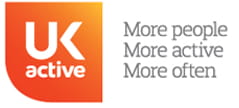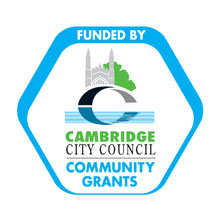We talk a lot about all the different training methods and new ideas as they come into the mainstream, but there is one exercise activity that never goes out of fashion – running
Whether it is running on the treadmill, looking out across the busy day-to-day life on Parker’s Piece or tramping around the streets of Cambridge or the parklands of Wimpole Hall – running is an exercise that appeals to a whole variety of people.
“Out on the roads, there is fitness and self discovery and the person we are destined to be.” George Sheehan.
Running is good for you in a number of ways. It helps weight control, it improves your heart and lung health (cardiovascular fitness), it strengthens your muscles and helps improve or maintain bone density, it helps combat or prevent some illnesses and it releases serotonin or ‘feel good’ hormones.
And there are other, less obvious benefits to running.
According to scientists from Cambridge University, runners are more likely to have greater stamina in every day activities, hence making better employees. They are also likely to be better thinkers, as the same bodily processes that help fuel the body efficiently also improves memory and learning.
This is all down to the production of one single protein, the estrogen-related receptor gamma (ERRy), which controls the release of energy to the muscles and the brain. The scientists say, become good at producing ERRy and your memory and your marathons should improve.
Of course, there are always downsides to everything and running is no exception. Runners can pick up all manner of injuries relating to the steady pounding of their feet and legs. Damage to knees, hips and backs are all too frequent and most runners at some point will suffer an injury or varying degrees of seriousness. The best advice here is to vary your exercise so you are not simply grinding out the miles. Mix up your running sessions with some other activities such as cycling, circuits and weight training. Use yoga to improve your flexibility. Go swimming as an impact-free alternative.
Bearing all this in mind, here are two workouts which will give you two completely different running experiences
Workout 1.
For this session you should have a clear idea of your current pace for running a mile.– Run one mile easy / stretch
– Run one mile at 10 seconds above current mile pace
– Jog 2:00 minutes slow
– Run one mile at current mile pace
– Jog 2:00 minutes slow
– Run one mile at 10 seconds faster than current mile pace
– Jog 2:00 minutes slow
– Run half a mile (800metres) at 15 seconds faster than current mile pace
– Jog 2:00 minutes slow
– Run half a mile at 15 seconds faster than current mile pace
– Cool down jog 5:00 minutes
– Stretch.
Workout 2.
For this session you need a hill that is long enough for you to run for up to 400 metres.
Run for 10 minutes easy/stretch
Run 400 metres up hill, three times at half pace.
Jog back recovery, no other break.
Run 200 metres up hill, three times at three-quarters pace
Jog back recovery.
Sprint 100 metres up hill, five time, full pace.
Jog back recovery after each sprint.
After five reps, rest and stretch for one minute.
Sprint 200 metres up hill, five times, full pace.
Jog back recovery after each sprint.
After five reps, rest and stretch for one minute.
Sprint 300 metres up hill, five times, full pace.
Jog back recovery after each sprint.
After five reps, rest and stretch for one minute.
Sprint 400 metres up hill, five times, full pace.
Jog back recovery after each sprint.
After five reps, rest and stretch for one minute.
Jog for 10 minutes as a cool down.












